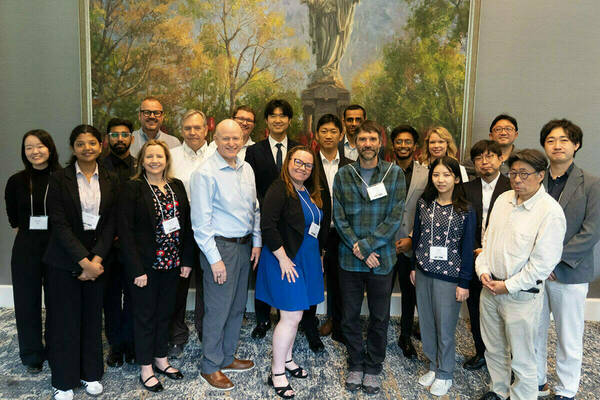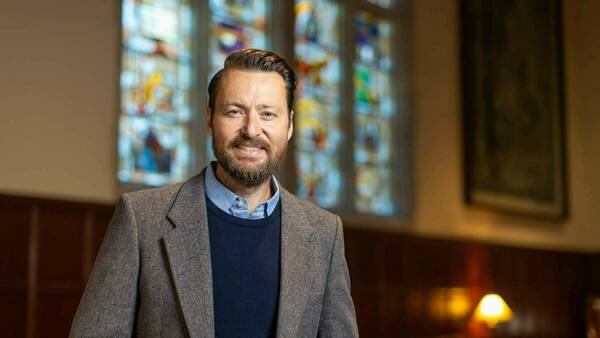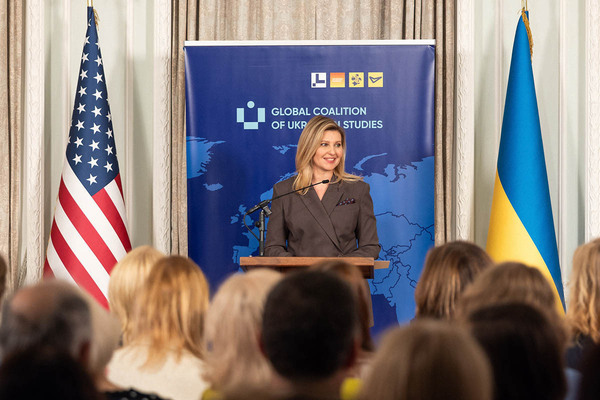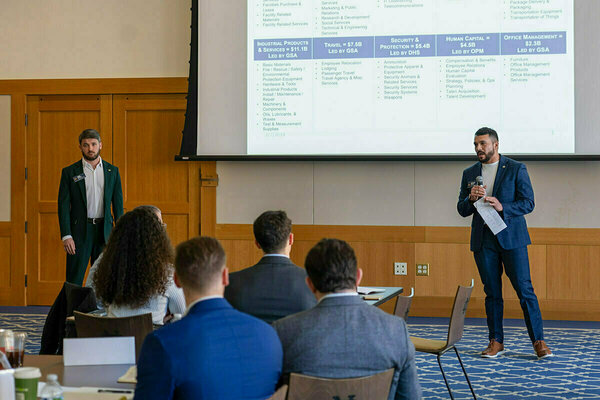Providing a Scientific Backbone: Francis Aznaran and his numerical solutions of differential equations
The pouring of milk into a coffee cup, the collapse of a bridge, and the way air flows around an airplane are all completely different scenarios, yet are modeled using the same differential equations.
This is the focus of Francis Aznaran, postdoctoral researcher at the University of Notre Dame. His work in the Department of Applied and Computational Mathematics and Statistics (ACMS) revolves around the numerical analysis of such equations.
In undergraduate and high school mathematics, students often work to find the exact solutions to problems. Yet, the equations Aznaran deals with are far too complex for that, so he works to create numerical algorithms on computers that allow him to solve them approximately.
“What I do is take these mathematical statements of physical laws and study them in their own right, as pure mathematicians do, but then also move on and design schemes to come up with approximate solutions to them,” said Aznaran. He subsequently proves properties about the resulting schemes and implements them in publicly available code.
Numerical analysis provides the backbone for many other areas of science: “Entire areas of physics revolve around the solutions of their underlying differential equations,” Aznaran said. “It’s particularly important in modeling and predictive contexts.”

These equations have strong pragmatic impacts, helping to predict things like how a disease moves through a population, or how a new roadway might deform under the weight of cars.
While in the abstract they might be approximate, Aznaran said that he can usually prove that his approximate solutions obtained on a computer will actually converge to the true one.
Notre Dame has offered Aznaran a strong community of other people in his field. Many of these researchers are also trained in the same methods as he is, particularly the finite element method, which was the focus of his doctoral degree.
“I was attracted to the excellent research group there is here at Notre Dame, not only in the field of numerical analysis, but even more specifically, the numerical solutions of differential equations, which is my area of focus,” Aznaran said. He was also deeply impressed with the thoroughness of the University’s Catholic mission and identity.
Alongside his supervisor, Martina Bukač, he is now working on more multi-physics applications of such numerical solutions.
As Aznaran pursues his research, he has found an outlet in distance running, which has helped train him for the perseverance that is necessary to have when his work gets challenging.
Aznaran recently won first place in the College of Science Postdocs Lightning Talk Competition, which allowed him to showcase the research he has been conducting and its practical relevance.
“You prove things and see them play out in your computer screens and simulations, but then, you hopefully get to see that mirrored in real-life physics,” Aznaran said. “I love my work because of that deep connection between quite abstract mathematical concepts and very concrete applications.”
Originally published by at science.nd.edu on October 18, 2024.
Latest Research
- Fighting for maternal healthThe United States has the highest maternal mortality rate of developed nations. An innovative postpartum care model from Notre Dame can save mothers around the globe. Read the story Originally…
- NSF Cyber SMART’s fall meeting shapes fifth year of project, legacy and future plans, and adds new memberThe U.S. National Science Foundation (NSF) Cyber SMART center gathered for its fall meeting on the University of Notre Dame campus this September. The meeting served as a checkpoint with progress reports and new projects from research leads and students…
- Slavic and Eurasian studies professor wins Humboldt fellowship to research how Russia’s religious past shapes its presentWhen Russia invaded Ukraine on Feb. 24, 2022, Sean Griffin realized his second book needed a new title. Griffin, an associate professor in the University of Notre Dame’s Department of…
- Notre Dame’s R.I.S.E. AI Conference builds interdisciplinary collaboration to inform human-centered artificial intelligenceAs artificial intelligence (AI) transforms nearly every sector of society — from healthcare and education to governance and global development — a critical question emerges: How can we conscientiously design and deploy these powerful technologies to positively impact society? This…
- University of Notre Dame joins the Global Coalition of Ukrainian StudiesThe University of Notre Dame has joined the Global Coalition of Ukrainian Studies after signing a Memorandum of Cooperation (MOC), formalized on September 24, 2025, at the Ukrainian Institute of America in New York City. Notre Dame joined four other American…
- The University of Notre Dame’s Mendoza College of Business and Industry Labs team up to inspire national security manufacturing competitiveness in the regionThe South Bend - Elkhart Region is full of manufacturing companies that are poised to grow, and Executive Master of Business Administration (EMBA) and Master of Business Administration (MBA) students at the University of Notre Dame are finding innovative ways to contribute to that growth. Earlier…













